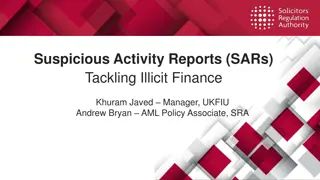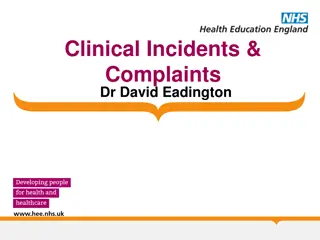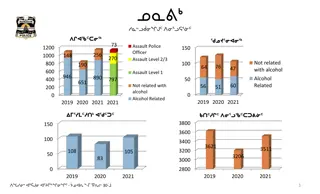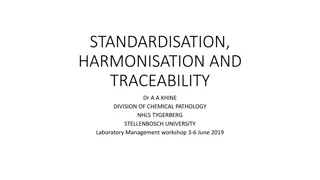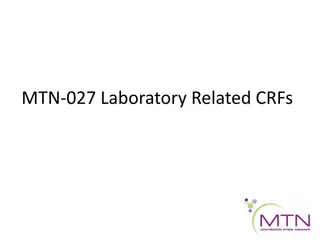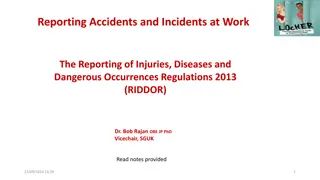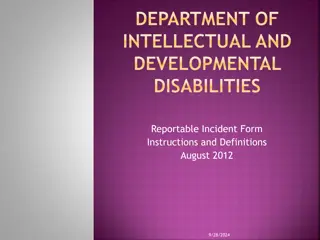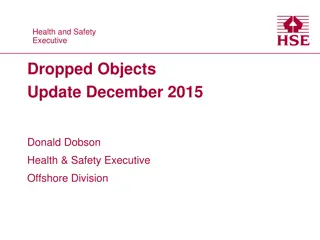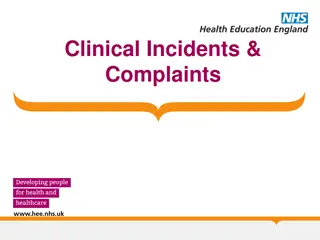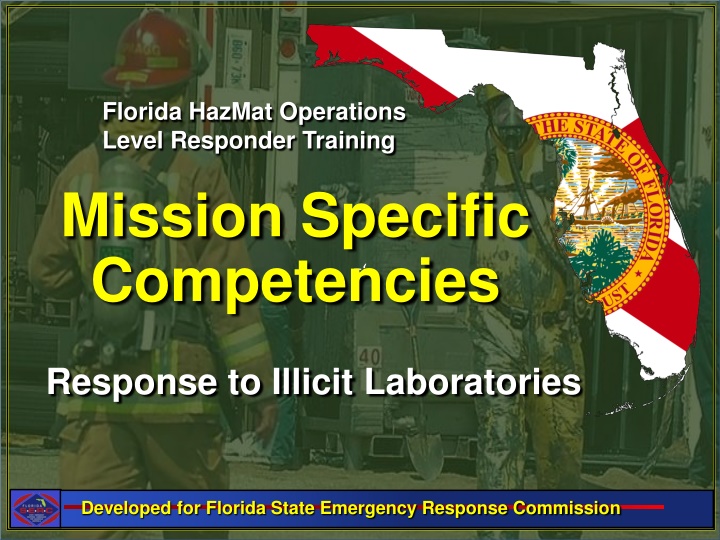
Response to Illicit Laboratories in Florida: Mission-Specific Competencies
Explore the specialized training and competencies required for responding to illicit laboratories in Florida. Learn about identifying, isolating, and managing hazardous materials, as well as coordinating with various response partners for a comprehensive approach.
Download Presentation

Please find below an Image/Link to download the presentation.
The content on the website is provided AS IS for your information and personal use only. It may not be sold, licensed, or shared on other websites without obtaining consent from the author. If you encounter any issues during the download, it is possible that the publisher has removed the file from their server.
You are allowed to download the files provided on this website for personal or commercial use, subject to the condition that they are used lawfully. All files are the property of their respective owners.
The content on the website is provided AS IS for your information and personal use only. It may not be sold, licensed, or shared on other websites without obtaining consent from the author.
E N D
Presentation Transcript
Florida HazMat Operations Level Responder Training Mission Specific Competencies = Response to Illicit Laboratories Developed for Florida State Emergency Response Commission
Prerequisites for Response to Illicit Laboratories Meet all competencies for: Awareness Level Operations Level Mission Specific Personal Protective Equipment Operations level responder assigned to Response to Illicit Laboratories Meet all competencies in this section =
Method of Instruction Classroom activity (lecture and exercise) Group PPE demonstration and practice =
If an Illicit Lab is Suspected Activate Unified Command with response partners. Isolate and Identify the type of lab (if possible). Identify materials involved. Determine what level and type of PPE is needed. Identify a monitoring and sampling strategy. Identify what evidence collection will be expected. =
Preplanning Consider having a task force for lab response in your community. Get to know your response partners. Ask for guidance from your assigned FBI representative. Develop response plans for guidance. =
Response to Illicit Laboratories Should include: Law Enforcement (local, state, and federal) Explosive Device Team Fire, EMS, and HazMat Team Public Health Environmental (local Department of Environmental Protection [DEP] and State Environmental Protection Administration [EPA] =
Developing an On-Scene Plan Once awareness level actions are taken to protect responders and the public then tactics are considered prior to an aggressive response. Stabilization of illegal activities and perpetrators are taken into custody. Develop an Incident Action Plan (IAP) Must include the indiscriminate disposal of hazardous chemicals. Down drains In the yard =
Identify the Type of Lab Sometimes it will be obvious. Might take extensive investigation. Some labs are combination labs such as a chemical weapons lab and an explosive lab. Often involves multiple disciplines. Hazmat Teams for chemicals. Explosive Device Teams for bomb making materials. Public Health for biological weapons. =
Drug Lab Typical hazards include: Airborne contaminants Chemical spills Retained reagents By-product waste Contaminated surfaces Include long-term health risks Absorbed spills like ammonia, ether, methanol, and acetone. Decontamination upon exit is important. =
Biological Labs Growth of viruses and bacteria. Increased chance of infection. Accidental release of airborne materials. Surface contamination. Biological toxins Ricin has been an issue all over the U.S. Easy to make with little risk. Extremely toxic by ingestion, inhalation, and injection. Disinfection upon exit is extremely important. =
Chemical Weapons Laboratories Real military grade chemical weapons are difficult to manufacturer. Many industrial chemicals are extremely toxic and used as replacements. Development of dispersal devices make these labs extremely dangerous. Chemicals can be released into air, sprayed on surroundings, or dispersed with explosive devices. Great caution upon entry, sampling, and investigation. Decontamination upon exit is important. =
Explosive Laboratories Contain either commercial or homemade explosive materials. Two distinct dangers (are probably more) Chance that material will detonate if disturbed. Products used can be toxic. Explosive device team must take the lead on these lab incidents. Isolation and evacuation becomes important on initial response. Decontamination needed upon exit of the hot zone. =
Monitoring, Sampling, and PPE Initial entry may be made by a unified group including: HM Technicians Explosive Technicians Crime Scene Specialists May require specialized PPE options. Chemical protective ensembles over bomb suits. Unknown the needed level of PPE until more information is gained. Complex and unpredictable scenes. =
Public Health and Environmental Impact Locations vary and may include remote rural, residential, and commercial properties. They have been found in: private homes, motels, hotels, apartments, house trailers, abandon buildings, camp grounds, trucks, and trailers. Lab operators range from beginners to established chemists. Labs may be basic small-scale to large and sophisticated labs. =
Infectious Disease and Chemical Exposure Other types of exposures to be concerned about: Needles and syringes Broken glassware Industrial toxic chemicals Infectious substances Appropriate PPE is critical. Follow up health assessments and blood tests. Consider updating all responders immunizations. =
Explosion and Hazards Major concern with all labs is explosion and hazards. Danger from chemical reactions, reagents, and explosive materials. If it occurs during the emergency response can affect: Responders Illegal lab operators Innocent occupants of nearby rooms/ premises. Anyone traveling by the area. =
Reporting and Documentation Illicit activities will always end up in court. Critical that accurate documentation and detailed timelines be kept. Identify all costs and injuries. Ensure that all monitoring equipment was maintained and calibrated or findings will be dismissed. =



